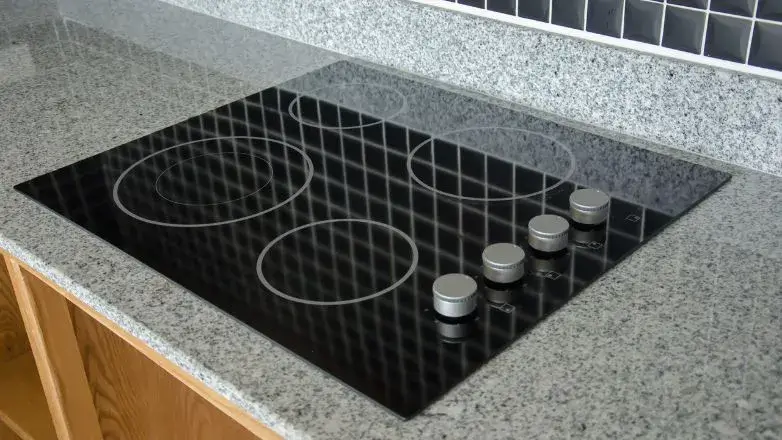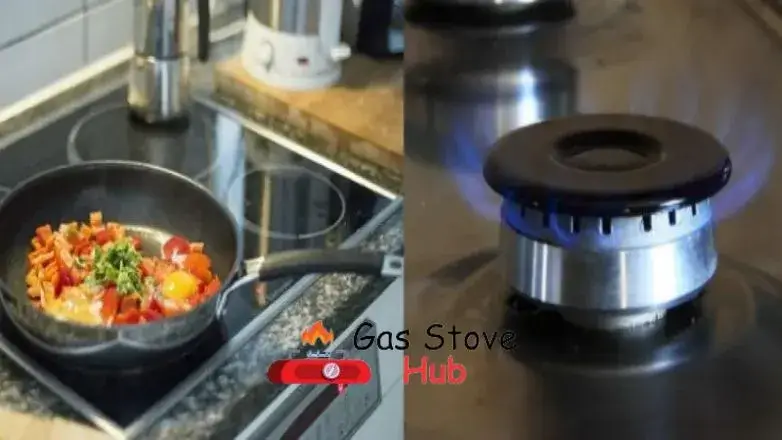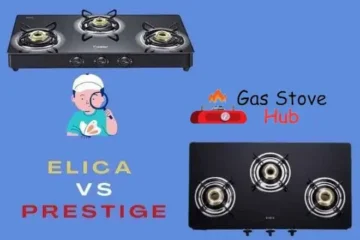Induction Stove vs Gas Stove, Both are two popular stove types used in many households in the country. The choice of cooking fuel and type of stove has a lot to with defining the cooking atmosphere. Price, convenience, flexibility, emission percentage, weight, and operational costs are some factors that influence people’s choice of stove.
What differentiates one from the other? What factors motivate people to choose one over the other? Let us find out in this article.
Contents
Induction Stove
Unlike in a gas stove where the utensil’s bottom is heated by the flames produced by the fuel consumption, an induction stove heats the utensil placed over it with its magnetic field. An Induction Stove heats the utensils directly, which means the users don’t have to use any gas or electrically heated element.
Gas Stove
Quite common in Indian households, gas stoves are equally popular among homemakers and professional chefs due to the extensive flexibility it offers. While using a gas stove, you have immense control over the heat that is transferred to the utensils.
Easy heat adjustment coupled with the longevity and ease of cleaning make gas stoves a much sought after option in stoves.
The gas stove is powered by any combustible gas like LPG, natural gas, butane, or syngas.
Induction Stove Vs Gas Stove: A Comparison
Let us compare some key characteristic features of gas stove and induction stove.
Working Principle
Induction stove works on the principle of electromagnetic induction, whereby a changing magnetic field produces generates an electric current. The inside of the cooktop has a tightly wound metal coil.
When a high-frequency alternating current passes through the coil, an alternating magnetic field is generated around it, which then penetrates the pan placed over the stove. The changing magnetic field generates eddy currents inside the pan and that is how food gets cooked.
Gas stove works on the principle of combustion, where the chemical energy in cooking gas is converted into heat energy.
Safety
While you compare an Induction Stove vs Gas Stove, Safety is a crucial factor when it comes to the selection of cooktops.
Because an induction stove does not produce any flame while cooking, there are hardly any chances of burning or fire hazard during cooking. But you should not touch the cooktop just after cooking because it might be slightly hot.
Fuel leakage, unsafe handling and misoperation might lead to burns and fire when using a gas stove and the cooking environment temperature rises as well.
If safety is compared, an induction stove is far better than a gas stove. However, people using a pacemaker are advised to avoid using the induction stove as the magnetic field generated by it may have an adverse impact on the working of the pacemaker.
Comfort
Comfort is a much sought after feature while selecting stoves and it becomes especially relevant in the long run. Almost everyone who has used a gas stove and induction stove believes that using an induction stove is far more comfortable than using a gas stove.
The fact that the induction stove doesn’t heat the surroundings even slightly and does not pose any dangers of fire and burn supports popular opinion.
Initial Cost
A gas stove has far more components than an induction stove and the buying cost of a gas stove is more than that of an induction stove. You get a good induction stove at a price range between Rs 1500-3000 while a gas stove with two burners will cost between 2000-4000.
Energy Efficiency
The energy efficiency of the cooktop is one parameter that is of paramount importance. Gas stoves work based on the principle of combustion, where the flames produced by combustion of the fuel heats the cooking pot. Around 40-50% of the energy generated by combustion can be effectively used for cooking.
Induction stove works based on the principle of electromagnetic induction where the magnetic field generated in the metal coil inside the stove generates eddy currents in the pan placed over the stove.
The food gets cooked due to the heat generated by the eddy currents. The energy loss in an induction stove is minimal when compared to that of a gas stove. Only 10-20% of the energy generated is lost when using an induction stove.
On comparing the energy losses, it is quite obvious that an induction stove is far more energy-efficient than a gas stove.
Maintenance
This is the last comparison in an Induction Stove vs Gas Stove. In most cases, a greater number of components are usually associated with higher maintenance costs. A gas stove has more components than an induction stove and it has a higher maintenance cost.
Advantage of Induction Stove

Here is the list of disadvantages of induction stoves.
Ease of Setting Up and Using
The induction stove’s simple and light design makes it quite easy for us to set it up and use it. It is perfect for people living in small indoor spaces.
Advanced Options
Induction stove comes with various options for controlling temperature based on the type of food that is cooking, setting timers, turning off the stove automatically when not in use, and more. The set of multiple options contribute to the usability of the cooktop.
Saves Energy
Induction stove is highly energy efficient as it causes minimal wastage of energy, unlike gas stoves, where a significant portion of the energy is being wasted.
Targeted Application of Heat
On using an induction stove, the utensils get heated, but the stove doesn’t. Targeted application of heat by induction stove makes cooking hassle-free and easy.
Disadvantages of Induction Stove
Here is the list of disadvantages of induction stove.
Disruption by Power Outages
The fact that electricity is the energy input of induction stoves implies that power outages can disrupt their operation. In case of an unexpected power outage, you may have to use alternatives to induction stoves.
Restraints on Utensils
You cannot use all types of utensils for induction cooking because induction stoves specifically require utensils with a flat bottom. In most cases, people usually have to buy some utensils compatible with an induction stove to cook using it.
Several factors are analysed to choose between a gas stove and an induction stove. Are you looking for a stove to use in your household or restaurant? How spacious is the kitchen? How reliable is the power supply at your place? What is the budget limit you have set for buying a stove? The answers to all of these questions and more help you decide what stove to buy.
Advantages of Gas Stove

Here is the list of advantages of a gas stove.
Independent of Electricity
You cannot always depend on the power supply at your place to cook meals at home or restaurants because an uninterrupted power supply is not something that you can always expect.
If the supply lines are disrupted by adverse weather or if the local authorities decide to initiate a power cut, you will be in trouble unless you have some cooking option independent of electricity. The gas stove doesn’t need electricity for its operation and this is one of its impressive features.
Multiple Burners
A meal isn’t always about a single food item. If you have to wait until one food item is cooked to start cooking the other, it will require you to invest a lot of time in cooking.
However, if you can cook more than one item simultaneously, you can save a lot of time you spend in the kitchen cooking. The gas stove has more than one burner making cooking easier.
No Restraints on Utensil Specifications
You do not have to be so choosy about the utensils that you are going to place over the gas stove because you can use any type of utensil for cooking on a gas stove. When cooking using an induction stove, you can only use utensils with flat bottoms.
The size of the utensils also does not matter much when using a gas stove.
Disadvantages of Gas Stove
Here is a list of the disadvantages of gas stoves.
Higher Risk of Fire or Burn
As inflammable gas is used as fuel in gas stoves, a greater risk is involved. A gas leakage could cause fires and hence we have to exercise utmost caution when using gas stoves.
Heats Up Atmosphere and Surroundings
The heat of the flames of a gas stove heats up the surroundings, which is undesirable during hot weather.
Restraints on Cooking Atmosphere
While cooking on a gas stove, we cannot use ceiling fans and if the weather is windy, we cannot keep the windows open.
Emission of CO2
LPG, butane, propane, natural gas, and syngas are commonly used in gas stoves and their combustion releases a high amount of CO2.
Limitations in Fuel Availability
The availability of common fuels used in gas stoves seems to be reducing and the limited availability will reflect in the costs of the fuels.
If the fuel cost rises much, cooking with gas stoves becomes an expensive affair and we would then have to look for low-cost alternatives.







